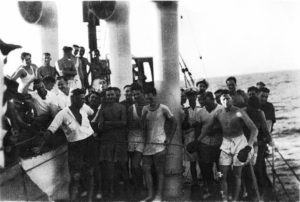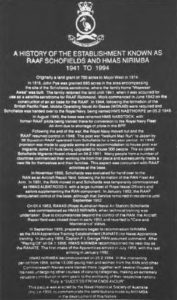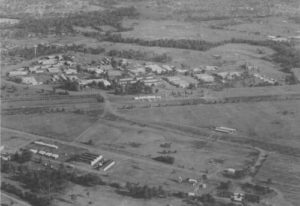The December 2021 edition of this magazine contained an article How did we get 16-inch Gun Projectiles to Australia?This came from the memoirs of Geoff Davidson, and using the same ...
HMAS Nirimba
Occasional Paper 93: Boxing in the Navy
By John Smith John Smith, our senior researcher, joined the RAN College in 1946 and retired as a Commander having specialised in gunnery. He served in many RAN ships and ...
Letter: Allegations of abuse
Dear Editor I thought I would share my concern at the claims made on the ABC 7.30 report tonight. My concern is that the problem is portrayed as being systemic, ...
Nirimba Apprentices – Masters of their Craft
Ten former Navy apprentices involved in the building of a yacht more than 40 years ago were reunited with the vessel in Newcastle this week as its new owners. The ...
Former HMAS Nirimba Site – Memorial Garden
On Saturday 3rd of November 2001, in overcast conditions, the Memorial Garden at the former HMAS NIRIMBA site, was formally dedicated. The service was conducted in front of some 150 ...
Obituary: Harry Train 1918-1999
Born: Millthorpe, October 26, 1918 Died: Balmain, May 23, 1999 Harry Train gave 30 years of his life to serving his country with the RAN. After enlisting in 1936 as ...
Obituary: Rear Admiral Bryn Mussared (1917-1995)
Rear Admiral Bryn Mussared was born in 1917 in Semaphore SA, and entered the Navy in 1932. On passing out from the Naval College, he was awarded ‘maximum time’ and the ...
Obituary: Lieutenant C.L.M (Jack) Shepperd, MBE DSM
Anybody who served in HMAS NIRIMBA between 1956 and its closure in 1994 would have known Jack Shepperd. He died on Wednesday, 17th August, 1994 aged 86. Apart from family ...
Australian Naval History on 25 February 1994
HMAS NIRIMBA, the RAN’s Apprentice Training School at Quaker’s Hill, west of Sydney, was decommissioned. ...
HMAS Nirimba – End of an Era – 1993
The Defence Force Establishment at Quakers Hill, N.S.W. spent most of its life as part of the Royal Australian Navy (RAN). This is fitting since the first non-Aboriginal people to ...


